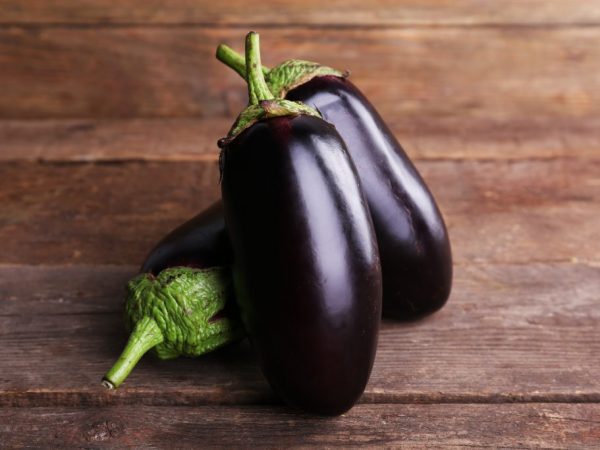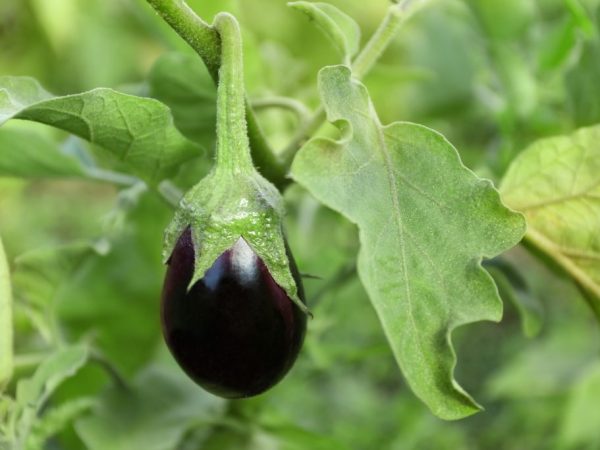Robin Hood Eggplant
Robin Hood eggplant is different from the rest of the fruits of this culture. Robin Hood is considered the best fruit of this plant for the quality of taste and yield.

Robin Hood Eggplant
Characteristics of the variety
The Robin Hood eggplant fruit grows up to 20 cm in length, and its width is 9 cm. According to the description, the fruit has a purple, almost black glossy rind. The pulp is white, contains no bitterness at all. A support is often installed for the shrub, since the bush itself is undersized, and fruiting is abundant and the strings reach 300 g.
Growing
Robin Hood eggplant is an unpretentious variety to care for. The plant is capable of growing and developing normally and even producing crops even under the most unfavorable climatic conditions. This culture is grown using seedlings. The seeds are sown in early spring. And at the end they are planted in open ground or a greenhouse. And with high-quality care, the culture will be able to bear fruit already at the beginning - the middle of summer.
Planting seeds
Seeds for planting must be at least two years old, they are disinfected. The depth for sowing is 1-2 cm. Prepared beds are at a distance of 40 cm from each other. For the development of the root system, the soil must have good air and water permeability. The composition of the soil for planting seeds includes:
- Humus.
- Peat.
- Biohumus.
- Sawdust.
Transplanting
Seedlings of this variety should be dived after its root system gets stronger.
The sprouts should have 5-6 large leaves. Before planting in open ground, the plants are prepared, containers with sprouts are taken outside and get used to the climate within 20-30 minutes. Over time, the time increases, so they continue to harden the seedlings for 2 weeks. The most illuminated place is chosen. Watering is done a few hours before planting in open ground.
Sprout care
Seedlings during the growing season need fertilizers containing:
- phosphorus;
- minerals:
- nitrogen.
Fertilize the seedlings 3 days after planting. Top dressing is done both at home, independently, and bought in stores. For prevention, eggplant is periodically sprayed with chemicals, all yellowed leaves are removed.
Watering

The plant is hygrophilous
Eggplant needs abundant watering, as the culture loves moisture. If watering is insufficient, then the fruits will turn out to be small and bitter. The irrigation regime is also regulated due to weather conditions. In summer, the plant needs abundant moisture, but in winter or cold autumn, watering can be reduced. The water temperature should not be too low, as sudden changes can damage the bush.
Diseases and pests
Basically, the culture is affected by rot: black, gray, white. This is one of the most common diseases found in eggplant. But in addition to rot, the plant can be susceptible to other equally dangerous diseases and pests. If the seedlings are not detected and cured in time, the culture planted in the open field will die.
Fight disease
The disease is detected by the condition of the leaves. Most often they are covered with spots or small dots. Rot is located in the root zone or manifests itself on the roots themselves. To cure the disease, the plant is treated with chemicals several times and watering is reduced, since most diseases develop due to excess moisture. All affected areas are removed.
Pest control
Both chemical preparations and folk remedies will help fight insects.
A mixture of dandelion and garlic leaves, onions, ash solution, soapy water will wash away and kill any pests. Fitoverin also copes with this task perfectly. Fallen and diseased leaves are collected and burned to avoid contamination of other crops.
Prophylaxis
In order to prevent infection, preventive methods are carried out. Seeds or seedlings are disinfected before planting. It is important to adhere to the watering regime, the eggplant loves moisture, but excessive watering leads to rot. It is also useful to periodically process the plant with Fitoverin and check the root area.
Conclusion
Caring for Robin Hood is no different from any variety of this vegetable. But at the same time, its endurance is many times greater than that of other varieties of this culture. Subject to the rules of cultivation and prevention, the plant grows quickly and gives a lot of harvest.


